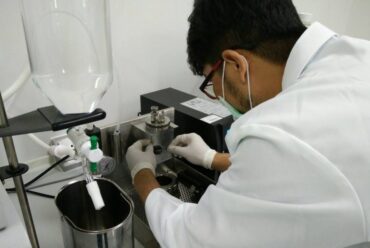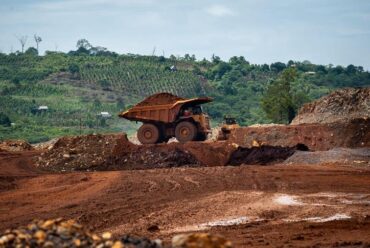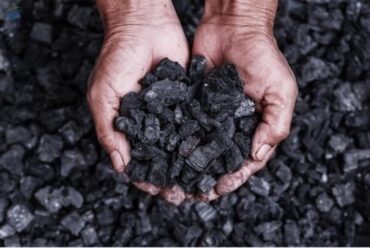3 Steps in Making Indonesian Crude Palm Oil
Steps in Making Indonesian Crude Palm Oil – One of the plantation products that play a crucial role in Indonesia’s economic development is Indonesian crude palm oil. The palm oil business has directly and indirectly employed 16 million people as the largest producer of palm oil in the world.
Production of palm oil and palm kernels was 48.68 million tons in 2018, with 40.57 million tones of crude palm oil (CPO) and 8.11 million tons of palm kernel oil produced (PKO).
People’s Plantations, which produced 16.8 million tons (35%) of the total, State Large Plantations, which produced 2.49 million tons (5%), and Large Private Plantations, which produced 29.39 million tons (60%) of the total.
What is Crude Palm Oil?
Palm oil is utilized as a raw material for shampoo, toothpaste, butter, and coffee creamer in addition to being used as cooking oil. This time, though, we’ll talk about the procedure for turning crude oil into Indonesian crude palm oil (CPO).
Naturally, Indonesia’s palm oil sector will grow quickly during such a profitable time. Oil palm seeds will be chosen before being made into a final item. For careful care, only top-quality seeds will be planted.
Following seeding, oil palm seedlings might take up to eight months to emerge. The seeds will be moved to the side yard once they have developed leaves.
The oil palm trees are deemed mature and prepared for harvesting after 30 months. The palm oil industry typically conducts the gathering procedure every seven to ten days.

source: market.bisnis.com
Steps in Making Indonesian Crude Palm Oil
It takes a long procedure to turn palm oil into Indonesian Crude Palm Oil (CPO). As a business with extensive experience in this area, we perform the following processes to produce crude oil:1. Collecting
1. FFB
Fresh Fruit Bunches is a typical name for oil palm fruit (FFB). FFB are distinguished by their vivid red color when they are prepared for harvest. Additionally, 10 or 15 fruits that fall to the ground usually contain FFB that are ready to be gathered. The FFB is ripe when the fruit starts to fall.
After that, a truck will collect and deliver the collected FFB. The FFB will next be placed in a dedicated room to undergo the evaporation sterilization process.
To release the bunches, the FFB will be vaporized using hot steam in this procedure. Additionally, this drying method is used to eliminate specific enzymes or worms that could lead to FFB deterioration.
Then, the loose bunches will be used again. Other industries will buy fibre from palm oil. These bunches of fibres are frequently used to create mattresses and car seat cushions.
The remaining bare fruit bunches will be returned to the soil of the garden and utilized as fertilizer in the meantime. This is how Indonesian crude palm oil is made for the first time (CPO).
2. Palm Oil Processing
After being freed out from the bunch, the FFB is processed into two primary products: Indonesian Crude Palm Oil (CPO), which is made from the mesocarp (fruit flesh), and palm kernel oil (PKO), which is made from the tough seeds in the middle of the FFB.
CPO is given the highest priority in the production of crude oil. The flesh that has been freed from the bunch is then squeezed or pressed with a specialized instrument to create CPO. Oil will then be released from the crushed apple flesh.
This oil is then stored in containers and put through another filtering process. The term “purification” also refers to the filtering procedure. The objective is to get rid of any leftover dirt and pollutants that might accumulate on palm oil.
This same clear CPO will be transported to the processing center where it will be converted into a variety of derivatives instruments, including cooking oil, lotion, and butter, petrochemical plants, or the raw materials used to make laundry detergent and lubricants, bio-diesel, or fuel alternatives to diesel, and linoleic, which is a component of skin care and lube.
3. Sustainable Palm Oil Production
There is still a batter or palm kernel cake left over after the conversion of crude oil into finished goods (BIS). BIS will be processed using a machine to remove the mesocarp fibres from the seeds if any are left in the squeezing equipment.
The split mesocarp fibres are used to make biofuels or other environmentally friendly fuels. In facilities that produce palm oil, this fuel is utilized to run boilers. A boiler is a steam-generating machine that powers a turbine that powers an industrial facility with electricity.
The fibre can still be used even after the seeds have been separated. Then, the shells of these seeds or kernels are shattered. The separated kernel is crushed to produce palm kernel oil (PKO) and palm kernel expeller, while the separated shell is utilized as a biofuel (PKE).
Read also : The 6 Most Coal Producing Regions in Indonesia
Before being employed as a raw ingredient in food, PKO that is still in its raw state will be purified. PKO is frequently a component of non-dairy ice cream and cream products. While this is happening, the remaining PKO manufacturing will result in PKE, which can be utilized to make animal feed in Indonesia (CPO).
That’s a glimpse of palm oil and its processing into crude oil at PT Tribhakti. If you need crude oil processing services and anything related to Indonesia Crude Palm Oil (CPO), then we are ready to serve. Not only that, but we also provide analysis of palm oil and the processing of crude oil waste and the like.
This image shows how PT Tribhakti processes palm oil to create crude oil. We are available to help if you require services for processing crude oil or anything else related to Indonesian crude palm oil (CPO). Additionally, we offer an examination of palm oil, waste from the manufacturing of crude oil, and other things.







